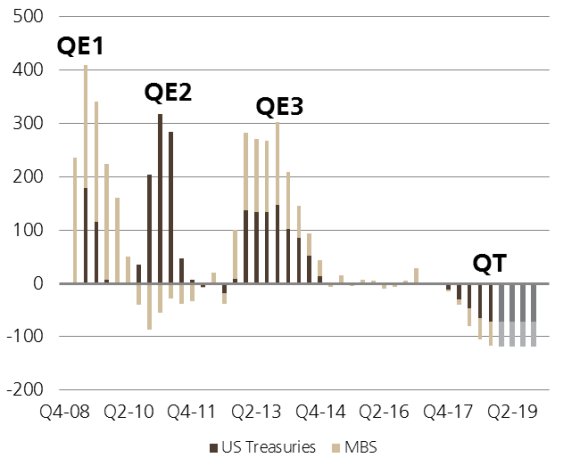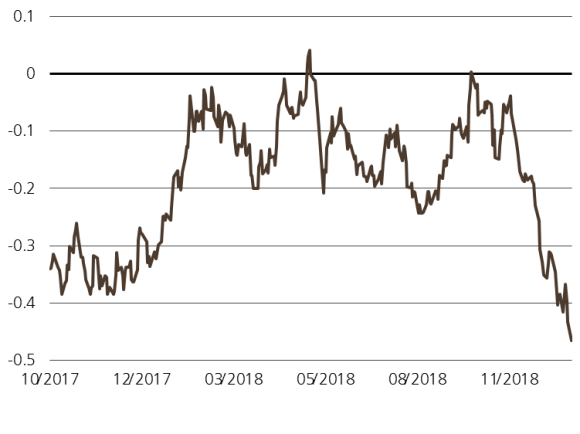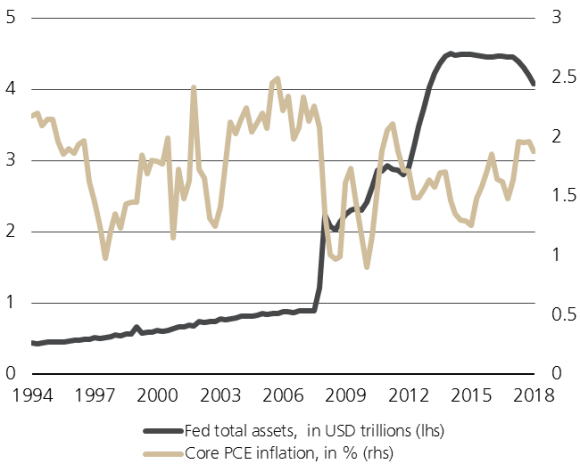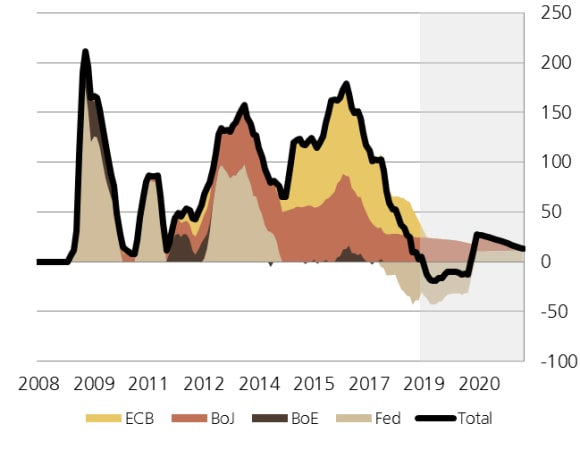What impact will QT have on financial markets?
What investors need to know.
What is Quantitative Easing (QE)?
What is Quantitative Easing (QE)?
Quantitative easing (QE) is an unconventional expansionary monetary policy that central banks have turned to once they have reduced their own policy interest rates to, or close to, zero. The central bank creates money electronically and uses it to buy assets, usually government bonds, from the market. This increases the amount of money in the financial system, which encourages banks to lend more and can push interest rates lower, which encourages businesses and households to borrow. In turn if businesses use the money to invest and consumers spend more, this can give the economy a boost.
What is Quantitative Tightening (QT)?
What is Quantitative Tightening (QT)?
Quantitative tightening (QT) is a contractionary monetary policy that is the reverse of QE. The government bonds and other assets that central banks have bought from the market through QE programs are held on their balance sheets, massively increasing their size. QT occurs when central banks start to reduce their balance sheets. In 2019, the US Federal Reserve is allowing its bond holdings to mature rather than replacing them. This is known as passive tightening. The Bank of England and European Central Bank have stopped their asset purchase programs but are not yet reducing their balance sheets. This means their balance sheets will shrink relative to GDP over time, which is known as organic tightening.
Why does it all matter?
Why does it all matter?
Investors are concerned that quantitative tightening could significantly impact markets. Over the past ten years, asset returns have displayed a high correlation with central bank purchases. And recently, the Fed’s balance sheet run-off was cited as a contributory factor in the sharp sell-off in risk assets in December, which left the S&P 500 almost 20% below its peak. Taking those two factors into consideration, it is clear that investors are concerned. After all, if QE had a significant impact on markets, then wouldn’t QT have the reverse effect?
Stay up to date
Subscribe to the latest investment news.
Our view:
Our view:
We believe that the overall direct impact of the Federal Reserve's quantitative tightening program is likely to be limited. As such, investors should not view it as a structural drag on asset returns. We outline four main reasons for our view:
1) QT will be much smaller than QE
The Fed’s balance sheet will not fall back to pre-crisis levels. The balance sheet expanded fivefold from USD 900bn pre-crisis to a peak in 2017 of USD 4.5trn. We believe QT will only reduce the balance sheet to about USD 3.5trn. With the reduction so much smaller than the expansion that preceded it, the direct impact of QT is likely to be significantly less than the impact of QE.
2) QT is unlikely to reverse fully the impact of QE on long-term interest rates
By buying long-term bonds and mortgage-backed securities, the Fed expected quantitative easing to push money into areas such as corporate bonds, thereby lowering corporations’ borrowing costs and, it hoped, sparking the productive use of capital. The Fed’s own research suggests that at its peak impact, QE lowered yields on 10-year US Treasuries by 100 basis points (bps), although other academic studies have disputed that the impact was this large.
QT can be expected to reverse some of this impact, but we do not expect it to raise long-term rates by 100 bps. As noted above, the reduction in the balance sheet will be far smaller than the expansion that preceded it. The evidence so far suggests that there has been no persistent trend toward a higher term premium. And, in fact, during 4Q18 when investors appeared most concerned that QT was having an adverse impact on risk assets, the term premium fell.
3) QT should not significantly impact liquidity or inflation
QT is also unlikely to have a significant impact on liquidity or inflation. Changes in liquidity or inflation conditions occur when there is a mismatch between supply of and demand for cash.
In the financial crisis, liquidity preference rose, and so central banks "printed money" in response. With the financial crisis now more than a decade behind us, the liquidity preference has fallen, and so the Fed is responding by reducing the amount of cash reserves in the system. This response, which is necessary to keep the supply of and demand for cash in balance, should therefore not affect liquidity or inflationary conditions. Indeed, ten years' worth of inflation data show that QE has not proven inflationary and, similarly, QT should not have a depressing effect on inflation. In fact, if the Fed were not reducing liquidity supply now, cash supply would exceed cash demand and inflation could become a serious problem.
4) The Fed’s balance sheet will start growing again in 2020
The Fed's quantitative tightening only started in October 2017, but we may now already be closer to the end of QT than the beginning. Uncertainty remains over both the final size of the Fed's balance sheet and the precise timetable for balance sheet normalization. Initial estimates were that balance sheet runoff might end in March 2020 with USD 1trn of excess reserves, but the Fed may bring forward the end date.
Other points to consider
Other points to consider
Although we do not think the Fed's QT is likely to have a major direct impact on asset prices or the economy, we believe that QT by the ECB or BoJ would have a greater impact if and when they start to reduce their reinvestment of the proceeds from maturing assets or sell assets. In the Eurozone and Japan the magnitude of QE, relative to their overall economies, has been much larger, in part because both of these economies were more cash-based than the UK and the US. The ECB and the BoJ were also much bolder in the range of instruments they bought, extending into corporate bonds, and, in Japan’s case, equities.








